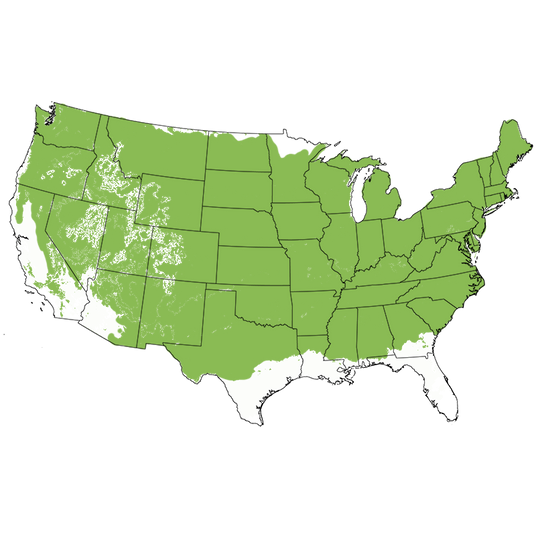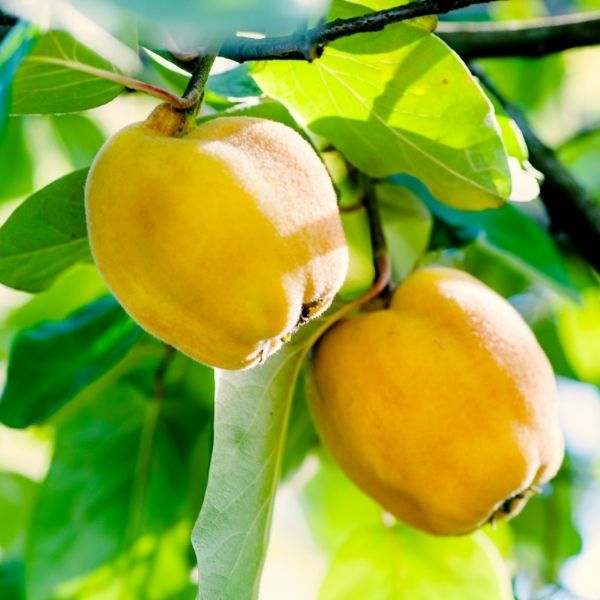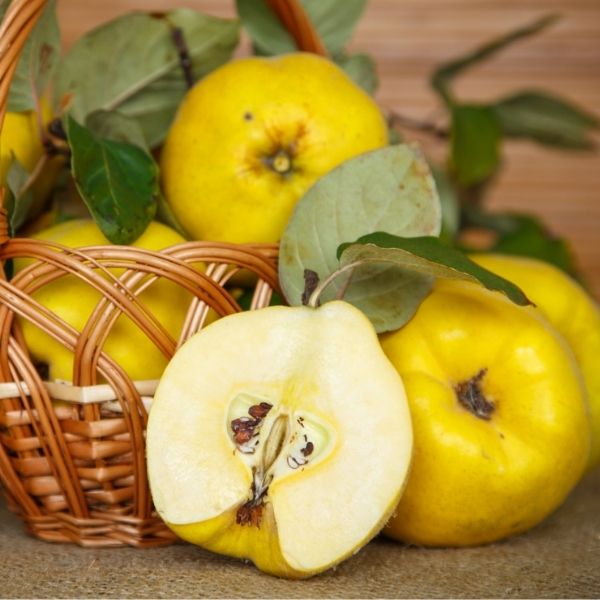Champion Common Quince Tree
Cydonia oblonga 'Champion'
- Stay Protected with Plant Sentry ™
Champion Common Quince Tree is backordered and will ship as soon as it is back in stock.
Plant Sentry™
Plant Sentry™

Plant Sentry™ Protected
Your order is protected by our compliance system that:
- Prevents restricted plants from shipping to your state
- Ensures plants meet your state's agricultural requirements
- Protects gardens from invasive pests and diseases
Delivery and Shipping
Delivery and Shipping
Delivery and Shipping
Fast, Safe Plant Delivery
Ships in 3-4 business days • Tracking provided • Weather protected
| Under $50 | $9.99 |
| $50 - $99.99 | $14.99 |
| $100 - $149.99 | $16.99 |
| $150 - $198.99 | $24.99 |
| $199+ | FREE |
✓ Zone-specific timing • ✓ Professional packaging • ✓ Health guarantee
Understanding Plant Options
Nature Hills offers plants in two main formats:
- Container Plants: Grown in pots with soil, sized by container volume and plant age
- Bare Root Plants: Dormant plants without soil, sized by height measurements
Container Plant Sizes
Container sizes indicate plant age and growing capacity rather than liquid volume equivalents. Our containers follow industry-standard nursery "trade gallon" specifications, which differ from standard liquid gallon measurements.
Young Plants (6 months to 18 months old)
| Container Size | Actual Volume | Metric Equivalent |
|---|---|---|
| 2" x 2" x 3" | 0.18 - 0.21 dry quarts | 0.20 - 0.23 dry liters |
| 4" Container | 0.31 - 0.87 dry quarts | 0.35 - 0.96 dry liters |
| 4.5" Container | 0.65 dry quarts | 0.72 dry liters |
| 6" Container | 1.4 dry quarts | 1.59 dry liters |
| 1 Quart | 1 dry quart | 1.1 dry liters |
| 5.5" Container | 1.89 dry quarts | 2.08 dry liters |
Established Plants (18 months to 2.5 years old)
| Container Size | Actual Volume | Metric Equivalent |
|---|---|---|
| 2 Quart | 2 dry quarts | 2.2 dry liters |
| #1 Container | 2.26 - 3.73 dry quarts | 2.49 - 4.11 dry liters |
| 5" x 5" x 12" | 3.5 - 4.3 dry quarts | 3.85 - 4.74 dry liters |
Mature Plants (2-4 years old)
| Container Size | Actual Volume | Metric Equivalent |
|---|---|---|
| #2 Container | 1.19 - 1.76 dry gallons | 5.24 - 7.75 dry liters |
| #3 Container | 2.15 - 2.76 dry gallons | 8.14 - 12.16 dry liters |
Large Plants (3-5 years old)
| Container Size | Actual Volume | Metric Equivalent |
|---|---|---|
| #5 Container | 2.92 - 4.62 dry gallons | 12.86 - 20.35 dry liters |
| #6 Container | 5.25 - 6.01 dry gallons | 23.12 - 26.42 dry liters |
| #7 Container | 5.98 - 6.53 dry gallons | 26.34 - 28.76 dry liters |
Bare Root Plants
Bare root plants are sold by height from the root system to the top of the plant. Plants may exceed minimum height requirements.
Common Sizes:
- Trees: 1 foot, 2 feet, 3 feet, 4 feet, 5 feet, 6 feet
- Shrubs & Perennials: 1 foot, 18 inches, 2 feet
Important Notes
Container Volume Specifications
- Trade Gallon Standard: Our containers follow industry-standard "trade gallon" specifications established by the American National Standards Institute (ANSI Z60.1) for nursery stock
- Volume Variations: Actual soil volume may vary due to plant root systems and growing medium settlement
- Age Indicators: Container size primarily indicates plant age and maturity rather than liquid volume equivalents
Growing Conditions
- Plant size can vary based on variety and growing conditions
- Container size helps indicate plant maturity and establishment level
- Larger containers generally mean more established root systems and faster landscape establishment
Seasonal Availability
- Bare root plants are available seasonally when dormant
- Container plants are available throughout the growing season
- Specific varieties may have limited availability in certain sizes
Questions?
For questions about specific plant sizes or availability, please contact our plant experts who can help you choose the right size for your landscape needs.
Plant Highlights
Champion Common Quince Tree highlights at a glance!
-
Botanical Name
-
Growing Zones4, 5, 6, 7, 8
-
Growth RateModerate
-
Mature Height
-
Mature Width
-
Leaf Color
-
Flower Color
-
Pollinator FriendlyYes
-
Pollinator Required
-
Bloom PeriodEarly Spring, Late Spring
Characteristics
Where To Plant
When To Prune
- Late Winter
Water & Moisture Needs
- Moderate
Sunlight Needs
Soil Needs
- Well Drained

Growing Zones
Looking for opportunities to add fruiting plants to your landscape? Delicious, prolific Champion Common Quince (Cydonia oblonga 'Champion') is a very reliable producer of large, pear-shaped fruit with light green skin in the mid-season.
If you love to cook, grow Quince Champion to make beautiful jellies and jams that cook to a pale pink. Drizzle quince syrup over ice cream; or make quince wine for a signature cocktail.
Planting and Application:
This is a self-pollinating cultivar, so you'll get plenty of pectin-rich fruit from one plant. However, yields per Champion Quince will be greater with two or more plants.
- Fragrant pink flowers age to white for a pretty springtime show. The oblong fruit starts off firm, and is cooked to bring out the full complement of spicy flavors...including notes of apple, pear and a zest that is all it's own.
- With a moderately trailing growth habit, this rounded deciduous shrub can be used in many ways in the landscape. It's a top contender for a naturalized permaculture planting with pliable branches that can be woven into an old-fashioned hedgerow.
- Prune flat to a sturdy trellis in an espalier, and you'll gain a beautiful garden feature with an easier harvest. Get how-to's and pro tips at the NatureHIlls.com Garden Blog.
- You can also train Champion Common Quince as a stand-alone shrub or tree. Keep them pruned for easy harvest using summer pruning for size control.
- Champion Quince bushes should be grown away from other pome fruits, like Apple and Pear for the best garden hygiene. Give Quince space to develop their sweet, savory fall fruit for a delightful taste treat.
#ProPlantTips for Care:
Choose a planting site in full sun with well-drained soil and good air circulation. You'll want to add Nature Hills Root Booster in the planting hole for life-long, symbiotic support of the tiny feeder roots.
- Water fruiting plants on a consistent schedule through fruit development. Touch the soil near the base of your Champion Quince tree and apply water when it starts to get dry.
- For the first several years, you'll be working to establish the structure branches to provide a framework for the fruiting spurs. Prune with a vase-shaped open center or start training your espalier in late winter as your Quince is dormant.
- Add a three-inch layer of mulch around the trunk, then pull it back away from touching the stems. Fertilize with good quality fruiting tree formula in early spring...and reapply according to the label directions.










